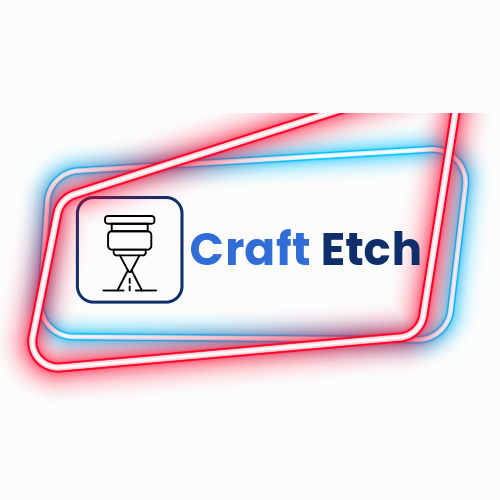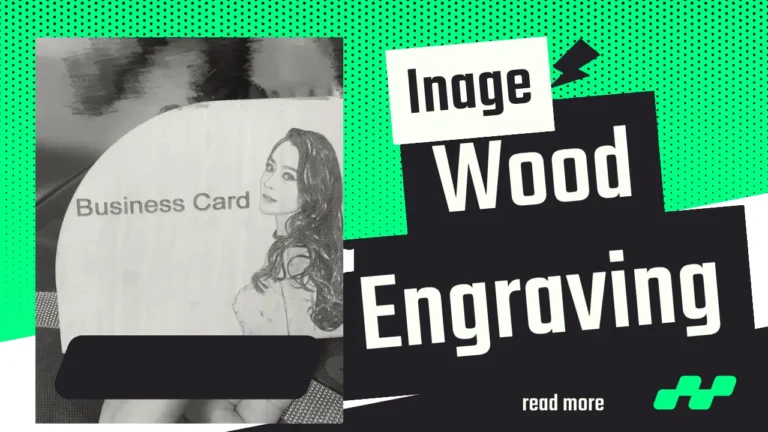Join Workshops
Physical Address
304 North Cardinal St.
Dorchester Center, MA 02124
CO2 laser engraving canvas settings for Lightburn
Setting the accurate parameters in Lightburn will help in the best laser engraving. We aim to bring the top 8 Lightburn settings that help you to set the best canvas for your Co2 laser.
Ensuring the right laser engraving settings is critical for achieving optimal results. Inaccurate parameters can lead to poor quality engravings, material wastage, or even equipment damage.
A set of proper Lightburn settings will allow precise, clean, and high-quality laser cutting.
Power settings
Setting the appropriate power is the most crucial part of your laser engraving process. There are no accurate power settings since it depends on the type of your workpiece.
An excessive power would overburn the leather patches and again, the low power may fail to engrave slate.
So, you need to identify which power settings would be appropriate for you.
You may try looking at the presets at your laser machine and if the presets match with your workpiece, it is fine to go with that.
Otherwise, reading forums and looking at some Youtube videos could be helpful before engraving new material where you are unsure about the appropriate settings.
Let,’s share an experiment that we did with the Atezr P10 laser engraver.

First, we tried to engrave at 20% power but could not gain the appropriate contrast ratio. Since we set the laser image in ‘Jervis’ mode, we thought that more power would bring high contrast to the photo.
So, we decided to go with the 60% power (it varies from with laser capacity). Our laser machine was a 10W diode, so 60% power was appropriate as per our knowledge.
However, if you use a 55W CO2 laser machine, then using less power for such a thin plywood piece would be okay.
Remember, the power would vary based on what you engrave. Engraving steel mugs with a Co2 laser would surely need at least 40% power since the laser beam needs to clearly melt the powder coatings and reveal the stainless steel underneath.
Learn more in detail: Effective ways of engraving photo on wood
Speed affects the engraving accuracy
As said earlier, you need to find the best engraving speed based on the material and the capacity of the laser power.
In the image above (my daughter’s photo engraving), we used an engraving speed of 100 mm/s.
Again, that is not your benchmark. Let’s you would engrave an apple Ipod using portable lasers having 6000 mm/s engraving speed. It is okay to use the 2000 mm/s if the laser machine allows to engrave at 1000 DPI and a precision of 0.01.
There is no accurate settings and if someone tells that would be a lie. You need to understand which settings affect where and you need to fine tune as per your need.
In a nutshell, a slow engraving speed with high power will burn more and a high speed would burn less. So, that’s your call to what extent you need to burn the material. This is the trick you need to understand.
Scan Interval
A wider scan interval might leave gaps between engraving lines, compromising the image quality. For instance, setting the scan interval to 0.3mm on a detailed photo might result in a pixelated output. Similarly, a lower scan interval would help in achieving clarity on the photoengraving.
In a simple sentence, a scan interval of 0.01 mm represents that the laser beam would move 0.01 mm to print its next line.
So, a lower scan interval represents a higher DPI and a higher scan interval would result in engraving with lower resolution.
For instance, if we use a scan interval of 0.01 there would be 254 dots in one inch since 1 inch equates to 25.4 mm.
Alternatively, if we use a scanning interval of 0.02 then the laser beam would move to 0.02 mm to print another dot meaning that there would be 127 dots in one inch if engraving which is a 127 DPi photo.
So, how would you choose the scan interval?
You may indirectly set the DPI instead. You will learn about this after using the machine for several times. Only you need to think that a higher DPI is not always good as there is always a risk of flame or workpiece damage from over-engraving that material.
In simple words, if the workpiece can absorb the power, you are okay to go with a higher DPI (lower scan interval)
Line interval
A line interval in Light Burn’s laser settings measures the distance between parallel lines.
For example, if you set a line interval of 0.1 mm, then there will be a 0.1 mm gap between each consecutive line that the engraver makes.
If you increase the line interval to 0.2 mm, there will be a 0.2 mm gap between each line.
So, a lower line interval results in higher clarity and more engraving time. Alternatively, a higher interval would take less time but the engraving would be less detailed.
Pass Count
The pass count in laser engraving settings refers to the number of times the laser goes over the same area. This is particularly important when you’re working with thicker materials or when you want to achieve a deeper engraving.
As an example, you may think about cutting thick balsa wood with a low-power laser. You would need multiple passes to cut 2 inches of balsa by repeating the process again and again.
Z-offset
An in-depth guide to laser cutting & EngravingThe Z offset in laser engraving settings refers to the distance between the laser head and the material being engraved.
This distance directly affects the laser engraving performance as the laser focus and its impact on precision is huge.
Some lasers automatically adjust this height. But, in some cases, you may need to adjust the z-offset manually.
Normally, manual adjustment of the z offset is only required if you are engraving an uneven material or engraving over the 3D objects.
However, thanks to modern laser engravers which automatically adjust the Z-offset height and maintain the focus and precision throughout the entire engraving work.
Image mode
Different image modes in Lightburn are: (you should not panic remembering these as there would be an image preview in the Lightburn so that you can get the idea how the final image would appear)
- Threshold: The simplest and fastest mode is mainly suitable for high-contrast black-and-white images. This is not recommended for photo engraving as it is more suits for logo or pattern engravings.
- Ordered Dithering: This technique creates a black-and-white pattern in a fixed grid to simulate shades of gray. The fine dot patterns can work well on materials like wood or leather, where individual dots tend to burn a little larger and blend. However, it’s less suitable for materials like glass or acrylic that need a more precise mode.
- Atkinson Dithering: it brings more detail and contrast compared to Ordered Dithering and is suitable for engraving photos on materials like coated metal or glass where the dots from the laser are very precise.
- Jarvis, Stucki, and Burkes Dithering: These modes are known as error diffusion methods. They distribute the “error” (the difference between the original image and the black & white version) to nearby pixels, which can help to maintain detail and smooth gradients. (see the earlier image we showed in the power section of this article).
- Halftone: This mode simulates gray levels with dots of varying size, similar to old newspaper prints. It’s especially good for materials like stone or glass where you have a lot of control over power and can make very small, distinct dots.
- Newsprint: Newsprint mode uses a fixed grid of dots, like Halftone, but the dots are always the same size. It adjusts the spacing between the dots to simulate different shades. It’s similar to Halftone mode and works well on the same types of material (glass, stone).
Here’s an example. The person’s image was in Stucki mode and the write-up was in Jervis mode.

Dithering Pattern
Dithering in Laser engraving, particularly in LightBurn settings, is a technique used to create the illusion of different shades of gray in a grayscale image by using a pattern of dots. It helps to decide the final output after setting the appropriate white and black dots combination.
The variation in the density and distribution of these dots can simulate darker or lighter areas in the engraving, allowing you to create detailed, photorealistic engravings from a grayscale image. You may need to set the dithering manually after watching the picture on the preview so that it becomes clear and vibrant.
An example of dithering could be – increasing the white tone of an image of a dog. The black tone would disappear his dark shades on the body so the engravings would not be lively.
Common mistakes
These are the common mistakes most people do while setting the canvas in lightburn.
- Choosing the wrong image mode results in a loss of detail and depth.
- Inappropriate patterns can affect the quality of grayscale images.
- Failure to adjust can lead to engravings that are too sparse or too dense.
- Overlooking this setting can result in blurry or unclear engravings.
- using too much power that ultimately destroys the workpiece
- Not adjusting the pass count according to material hardness
- Not performing test engravings can result in a waste of material and time due to incorrect settings.
Conclusion
Setting your Co2 laser canvas is easy if you know the role of each parameter. There are other settings or options that you need to experiment with regularly. Always remember, no parameters are constant in a laser canvas. They will all change depending on the material and the laser you are using.
Good luck



